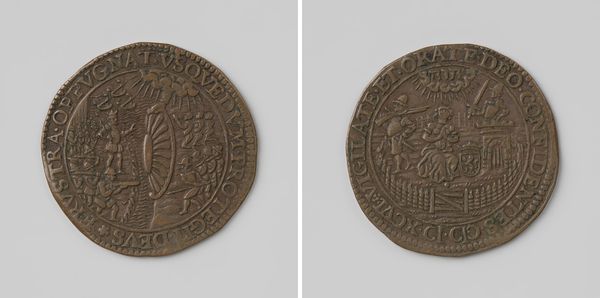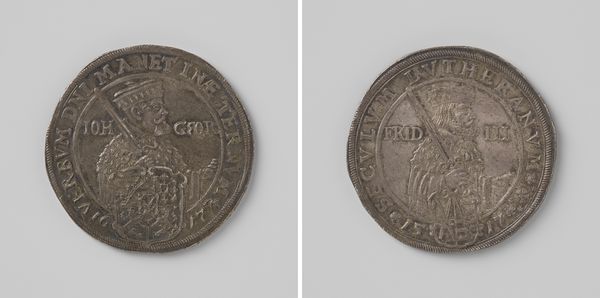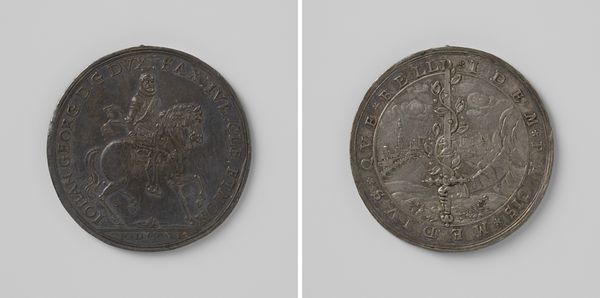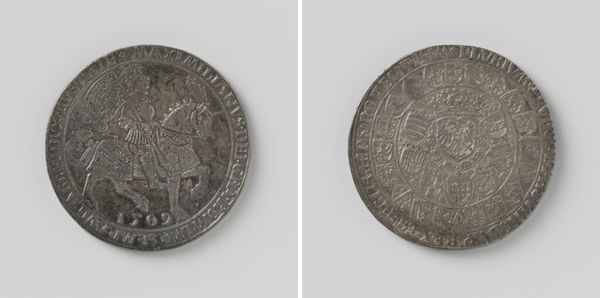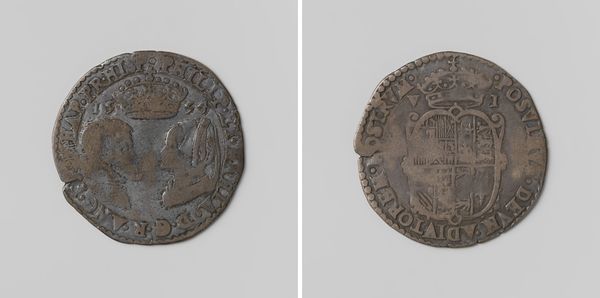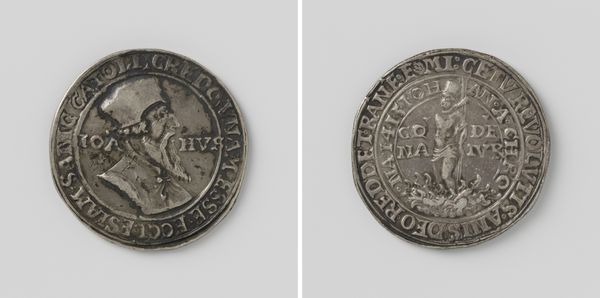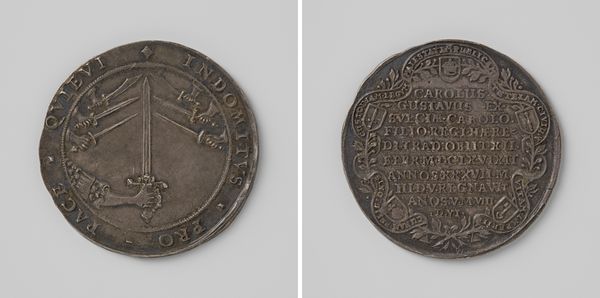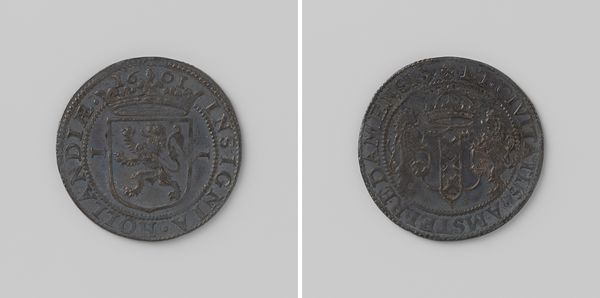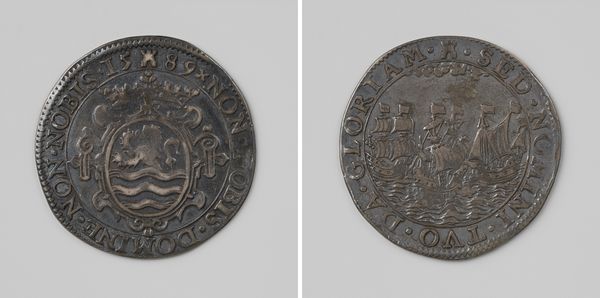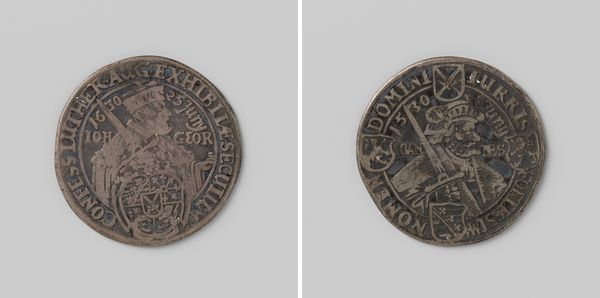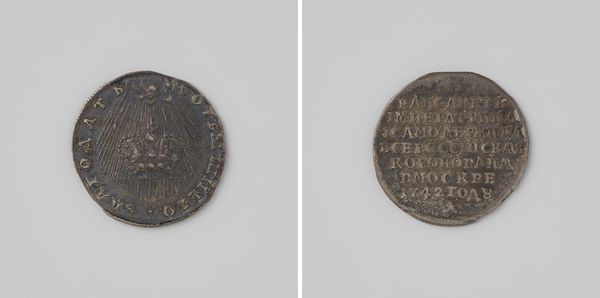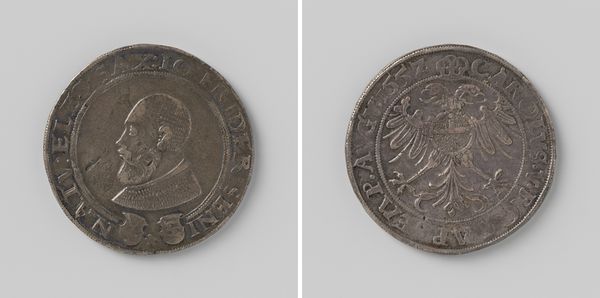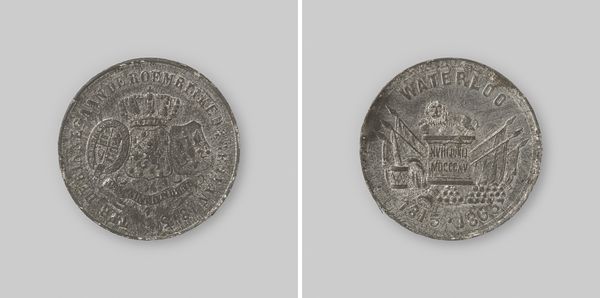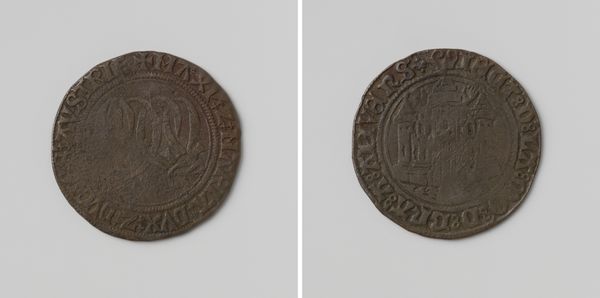
Eerste eeuwfeest op het overleveren van de Augsburger geloofsbelijdenis op de Rijksdag 1630
0:00
0:00
print, metal, engraving
#
portrait
# print
#
metal
#
11_renaissance
#
engraving
Dimensions: diameter 4.5 cm, weight 294 gr
Copyright: Rijks Museum: Open Domain
Curator: Well, look at this peculiar thing—a metal print commemorating the first centenary of the Augsburg Confession's presentation to the Diet. "Eerste eeuwfeest op het overleveren van de Augsburger geloofsbelijdenis op de Rijksdag" is the name. Editor: My immediate reaction is "sober," or maybe even "severe." There's a certain heaviness here, visually, fitting perhaps for an object of such commemorative intent. And oh my, all that detail pressed into such a small format... the artist must have had exceptional concentration. Curator: Indeed! These tiny, detailed engravings – and this piece dates to around 1630 – are incredible feats. See the intricate royal bust and surrounding inscription... What’s also compelling is how coinage often freezes pivotal cultural moments into symbolic representations meant for mass circulation, which helps anchor the memory of events. Editor: Right. And there’s a deliberate mirroring effect happening with the images on both sides: almost identical poses but inverted—that creates a tension, like looking at reflections in cloudy water, both similar and skewed. It subtly destabilizes certainty. Is this a commentary on religious doctrine becoming less assured with the passage of time? Curator: Interesting observation. Or perhaps simply a play on symmetry, emphasizing the endurance and mirroring aspects of faith itself. Iconographically, a mirror represents self-reflection and truth – maybe suggesting a period of evaluating principles. Note the prominent symbols relating to the church and crown woven into the imagery—the cross, scepter, even the armor hinting at earthly authority under divine guidance. Editor: I'm still drawn back to the feeling of weighty austerity... I wonder, was this somber tone deliberately invoked to assert doctrinal purity amid turbulent religious climates or perhaps because the Confession became, with time, something harder to follow? It makes one ponder the cultural anxieties embedded in seemingly official celebrations. Curator: A really perceptive interpretation. I find myself considering the way it speaks to us now, reminding us how the tangible objects people produce can carry the burdens and echoes of moments long past—making present feel intricately tethered to history. Editor: Absolutely. It gives me much food for thought regarding time, visual symbol usage, and the human drive to stamp meaning onto…everything, even pocket change. Thank you for that lovely, short history tour!
Comments
No comments
Be the first to comment and join the conversation on the ultimate creative platform.
